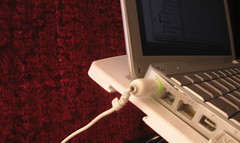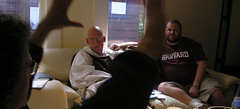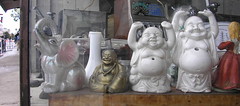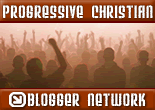The Visual Sinews of Cognitive Reasoning

In the nineteenth century, “object lessons” were given children to encourage them to describe the material world is one example. Object Lessons originated in Switzerland with the child-learning experiments of Pestalozzi, but his first disciples were in England, where the technique was rapidly absorbed in schools.
Primers instructed teachers to display objects of particular shapes, textures, scents, and tastes – ivory, camphor, and pepper – to children, with the purpose of helping them describe the object’s attributes. By apprehending the categories of the material world, children would work up to more abstract forms of characterization, manipulating them according to their own ability.
Object lessons spread quickly as a means of teaching. By the 1830s, Poor Law Committees were recommending the object-lesson as a means of communicating with delinquent youth. In time the object lesson primers absorbed the language of gait, walk, and personal description. By the 1860s, when the primers began to appear in great numbers, the object-lesson instructed children to observe where postmen were going with their letters, how individuals dressed, and how they walked. Applying specific words to these answers, the attention to material detail shaped a forming critique of individuals based on their dress and appearance. Object lessons taught an entire generation of Londoners in the nineteenth century how to be suspicious of strangers on the public street.
 On the internet, visual organization of information has entered a new golden age. Visually displaying information is more important, because it can save precious time, condensing reams of data into a single screen. It's also important simply to attract traffic to a website. New experiments in visual organization abound. Many of my favorites, have, of course, to do with delicious -- the grouping of tags into broader categories of learning. A fantastic blogger, Infosthetics, makes a gorgeous record of the juiciest, candyest innovations, and also records everything fascinating in his delicious stream. The great thrust of work now is to show connections within databases like delicious, where users are making their own connections between categories, but computers can find connections between users and categories that the humans haven't found yet.
On the internet, visual organization of information has entered a new golden age. Visually displaying information is more important, because it can save precious time, condensing reams of data into a single screen. It's also important simply to attract traffic to a website. New experiments in visual organization abound. Many of my favorites, have, of course, to do with delicious -- the grouping of tags into broader categories of learning. A fantastic blogger, Infosthetics, makes a gorgeous record of the juiciest, candyest innovations, and also records everything fascinating in his delicious stream. The great thrust of work now is to show connections within databases like delicious, where users are making their own connections between categories, but computers can find connections between users and categories that the humans haven't found yet. The nineteenth-century record should sensitize us to how much, from generation to generation, our understanding of what objects and visual information convey can change. Where will we go next, beyond finding connections within the data pools? Maybe the nineteenth century is still instructive. The objects themselves have meaning, but those associations paired with objects are grander categories of meaning still: the touch, taste, smell of objects in the primers. The child doesn't have to know that there are five categories of sense, or how those senses work, to be aware of the phenomena he experiences, and to start collecting those experiences to chart larger meaning. What meaning we get from objects may reside in categories of which our conscious selves are not yet aware.
Cryptic as those categories appear, they have been the subject of much research in psychology and anthropology for the last two centuries. The study of how to manipulate those psychological categories was the subject of intense effort in social engineering.
 For all of those reasons, one more website is attracting my attention these days. Brian Hawthorne's LikeBetter shows users infinite pairs of different photographs, and asks them which they like better. After endlessly clicking your preference for barns over bridges, or he-man over GI-Joe, you've given the computer enough information to assess, with a great degree of accuracy, whether you are left-handed or right-handed, college-educated or not, a Republican or a Democrat.
For all of those reasons, one more website is attracting my attention these days. Brian Hawthorne's LikeBetter shows users infinite pairs of different photographs, and asks them which they like better. After endlessly clicking your preference for barns over bridges, or he-man over GI-Joe, you've given the computer enough information to assess, with a great degree of accuracy, whether you are left-handed or right-handed, college-educated or not, a Republican or a Democrat. So what are the categories of knowledge that fall in between my preference for a Massachusetts barn and the fact that I went to college? How do visual experiences wire to cultural categories, and what are those cultural categories? There's a subject for research.
Labels: delicious, object lessons, social networking, visualization










1 Comments:
Hello!
This is an invitation to visit online TV channel Xeoss.com!
No need to download anything!
Watch any video, show, interview immediately on your screen!
Thanks for your time.
XEOSS.com
Post a Comment
<< Home